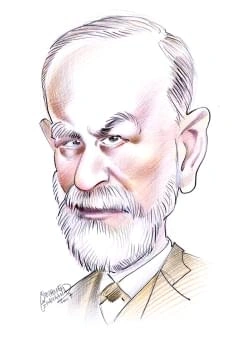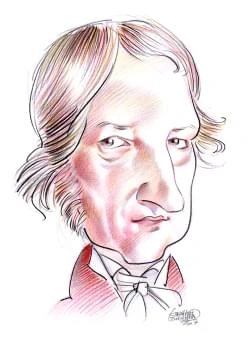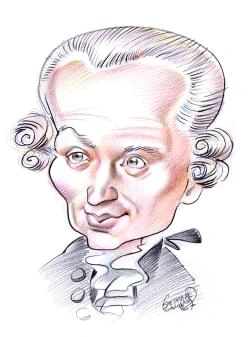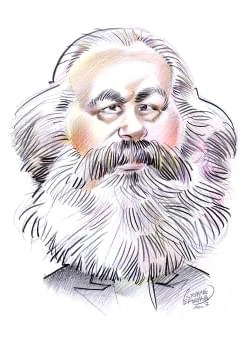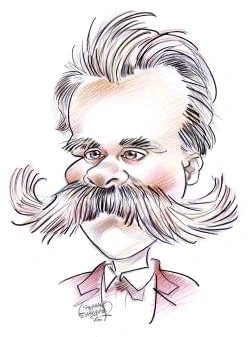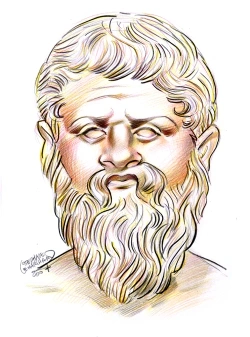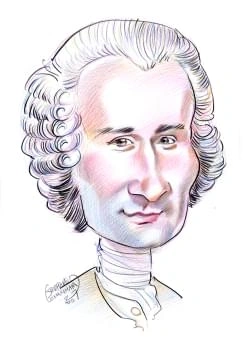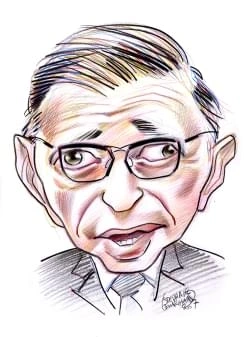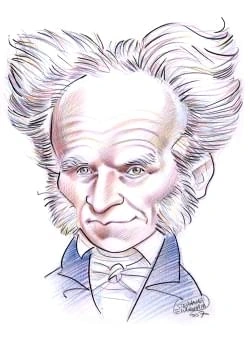58 résultats pour "portuguese"
-
Literatura portuguesa - idiomas.
importante de la literatura portuguesa, el poeta Luís de Camões. De origen noble aunque pobre, de joven probó fortuna en la corte, y más tarde, en África y Asia. Regresó asu país arruinado y con la salud quebrantada, pero con un tesoro imperecedero: su poema nacional Os Lusíadas (1572), que en portugués significa 'los hijos de Lusus'. Esta obra constituye quizá la mejor epopeya del renacimiento, así como un homenaje a los reyes portugueses del pasado y a todo el pequeño pero intrépido país. El...
- La lengua portuguesa en el mundo.
- Lengua portuguesa - idiomas.
- Portuguese Water Dog.
- Poesía trovadoresca galaico-portuguesa - idiomas.
-
Angola (country) - country.
Portugal in 1975, it had approximately 400,000 Portuguese settlers. The vast majority of the Portuguese community has since departed for Portugal. A Population Characteristics The 2008 estimated population of Angola, including Cabinda, was 12,531,357. The population distribution, however, was uneven, with about 70 percent of thepopulation concentrated in the north and along the coast. The rate of population increase was 2.1 percent annually in 2008. The population is overwhelmingly rural; only3...
-
Christopher Columbus
I
INTRODUCTION
Christopher Columbus (1451-1506), Italian-born Spanish navigator who sailed west across the Atlantic Ocean in search of a route to Asia but achieved fame by making
landfall in the Americas instead.
explorers, adventurers, entrepreneurs, merchants, and any others who saw their fortunes tied to the trade winds and ocean currents. Columbus’s brother Bartholomewworked in Lisbon as a mapmaker, and for a time the brothers worked together as draftsmen and book collectors. Later that year, Columbus set sail on a convoy loadedwith goods to be sold in northern Atlantic ports. In 1478 or 1479 Columbus met and married Felipa Perestrello e Moniz, the daughter of a respected, though relatively poor, nob...
-
Christopher Columbus.
explorers, adventurers, entrepreneurs, merchants, and any others who saw their fortunes tied to the trade winds and ocean currents. Columbus’s brother Bartholomewworked in Lisbon as a mapmaker, and for a time the brothers worked together as draftsmen and book collectors. Later that year, Columbus set sail on a convoy loadedwith goods to be sold in northern Atlantic ports. In 1478 or 1479 Columbus met and married Felipa Perestrello e Moniz, the daughter of a respected, though relatively poor, nob...
-
-
Christopher Columbus.
explorers, adventurers, entrepreneurs, merchants, and any others who saw their fortunes tied to the trade winds and ocean currents. Columbus’s brother Bartholomewworked in Lisbon as a mapmaker, and for a time the brothers worked together as draftsmen and book collectors. Later that year, Columbus set sail on a convoy loadedwith goods to be sold in northern Atlantic ports. In 1478 or 1479 Columbus met and married Felipa Perestrello e Moniz, the daughter of a respected, though relatively poor, nob...
-
Christopher Columbus - explorer.
explorers, adventurers, entrepreneurs, merchants, and any others who saw their fortunes tied to the trade winds and ocean currents. Columbus’s brother Bartholomewworked in Lisbon as a mapmaker, and for a time the brothers worked together as draftsmen and book collectors. Later that year, Columbus set sail on a convoy loadedwith goods to be sold in northern Atlantic ports. In 1478 or 1479 Columbus met and married Felipa Perestrello e Moniz, the daughter of a respected, though relatively poor, nob...
-
Atlantic Slave Trade.
members of the planters’ society. Through most of the years of the Atlantic trade, prices for Africans remained favorable in relation to the price of the crops theyproduced. They were, thus, the best economic solution for plantation owners seeking inexpensive labor. The Atlantic slave trade began as a trickle in the 1440s and grew slowly through the 17th century. By 1700, 25,000 slaves, on average, were crossing the Atlantic everyyear. After 1700 the trade grew much more rapidly to a peak in the...
-
Portugal - geografía.
3.2 Ciudades principales Lisboa, con una población (según el censo de 2003) de 1.962.000 habitantes, es la capital, la mayor ciudad y el principal puerto marítimo de Portugal. Otras ciudadesimportantes son: Oporto (263.131 habitantes), la segunda ciudad del país y un importante puerto marítimo; Coimbra (148.474 habitantes), un destacado centro industrial;Braga (112.039); Setúbal (113.937); y Faro (58.051), localizada en el área turística del Algarve. 3.3 Religión e idioma Aproximadamente el 94...
-
Cape Verde - country.
station and a submarine cable station at Mindelo still attracted many ships until World War I. Trade increased again toward the middle of the 20th century. In an attempt to avert growing nationalism, Portugal in 1951 designated its African colonies, including Cape Verde, as overseas provinces. The provincial status gaveCape Verdeans access to higher education, but lack of job opportunities and poverty in the islands forced many of the educated to take administrative jobs on theAfrican mainland....
-
Latin American Independence.
be inferior and were not permitted a university education. In the lowest caste were the African slaves. As the Spanish monarchy tried to increase its authority, it was hampered by the power of the Catholic Church. The church, including various religious orders, hadacquired great wealth, including large holdings of land, in the colonies. The Jesuit order especially had gained extraordinary wealth and political influence, and it alsocontrolled much of the university and high school education in th...
-
Congo (river) - Geography.
region as Portuguese territory, leaving a marble shaft on the riverbank as proof of his discovery. To Europeans the river became known as the Rio de Padrão (Pillar River). The Kongo king welcomed Cam and subsequent Portuguese explorers and established friendly trading relations with the Portuguese. More than 300 yearselapsed before serious exploration of the Congo was undertaken. Francisco José de Lacerda, a Portuguese explorer, reached the copper-rich Katanga region from the east in 1798, as...
-
Literatura brasileña - idiomas.
inserta en sus escritos antítesis, equívocos y juegos de palabras tomados de los modelos de Góngora y Quevedo. Su obra está recorrida por profundos dualismos:religiosidad y sensualismo, misticismo y erotismo, valores terrenos y aspiraciones espirituales. Manoel Botelho de Oliveira (1638-1711) publicó en 1705 Música del Parnaso (dividida en cuatro coros de rimas portuguesas, castellanas, italianas y latinas) con un contrapunto cómico presente en dos comedias: Hay amigo para amigos, y Amor, en...
-
-
East Timor - country.
members are designated by the Superior Council for the Judiciary. This council is the organ of management and discipline of judges and is responsible for judiciaryappointments, transfers, and promotions. VI HISTORY Timor was a destination on ancient Chinese trade routes and was particularly known for its sandalwood. The Portuguese began colonizing Timor in the early 16thcentury as European trade and influence expanded in the region. They exploited Timor for its forest products and spices, and...
-
Geographic Exploration.
The commercial reason for exploration has been a consistent driving force. In 1492 the great navigator Christopher Columbus sailed west across the Atlantic Oceanseeking a new, shorter, and cheaper route to reach the riches of East Asia, and Portuguese explorer Vasco da Gama circumnavigated Africa for much the same reason.Yet similar investigations of the profitable eastern trade had already been made by Arab sailors. Arab trading ships were sailing from the Arabian Sea to southeasternAsia probab...
-
Geographic Exploration - explorer.
The commercial reason for exploration has been a consistent driving force. In 1492 the great navigator Christopher Columbus sailed west across the Atlantic Oceanseeking a new, shorter, and cheaper route to reach the riches of East Asia, and Portuguese explorer Vasco da Gama circumnavigated Africa for much the same reason.Yet similar investigations of the profitable eastern trade had already been made by Arab sailors. Arab trading ships were sailing from the Arabian Sea to southeasternAsia probab...
-
Rio de Janeiro (city) - geography.
were coronated; and Our Lady of Candelária Church, thought by some to be the city’s most beautiful church. Another building of interest is the Imperial Palace, located several blocks west of Santos Dumont Airport. Originally constructed as Brazil’s colonial governor’s capitol in1743, it was converted to the royal palace during the city’s period as an imperial capital. It has recently been restored and now houses a cultural center. Otherimpressive 19th-century palaces include Itamaraty and Catete...
-
South America - Geography.
South America is dominated by relatively warm climatic regimes. Spanning nearly the entire continent along the equator is a belt of humid tropical climate that grades tothe north and south into broad zones where the length of the rainy season and the amount of rainfall diminish. These zones have wet summers and dry winters and aresubject to prolonged droughts. Droughts are a particularly serious problem in northeastern Brazil and along the northern coast of Venezuela and Colombia. The areas ofra...
-
African Literature
I
INTRODUCTION
African Literature, oral and written literature produced on the African continent.
that few scholars of African culture know any African languages, and few Africans know an African language other than their own. The best-known literatures in Africanlanguages include those in Yoruba and Hausa in West Africa; Sotho, Xhosa, and Zulu in southern Africa; and Amharic, Somali, and Swahili in East Africa. In West Africa, Yoruba writing emerged after Bishop Ajayi Crowther, a former slave, developed a script for the language and in 1900 published the first Yorubatranslation of the Bible...
-
Ottoman Empire .
fleets at Suez, Egypt; though the Portuguese were not expelled, Selim did manage to prevent the establishment of a total Portuguese monopoly over the spice trade. Selim I died in 1520 after having spent most of his short reign on matters pertaining to the east. His son and successor Süleyman I (reigned 1520-1566) again turnedthe attention of the Ottomans to the west. In August 1521 Süleyman, later known as Süleyman the Magnificent, opened the road to Hungary by capturing Belgrade, aHungarian str...
-
Ottoman Empire - History.
fleets at Suez, Egypt; though the Portuguese were not expelled, Selim did manage to prevent the establishment of a total Portuguese monopoly over the spice trade. Selim I died in 1520 after having spent most of his short reign on matters pertaining to the east. His son and successor Süleyman I (reigned 1520-1566) again turnedthe attention of the Ottomans to the west. In August 1521 Süleyman, later known as Süleyman the Magnificent, opened the road to Hungary by capturing Belgrade, aHungarian str...
-
-
Brazil - country.
occasional droughts. Brazil contains a wealth of mineral and plant resources that have not yet been fully explored. It possesses some of the world’s largest deposits of iron ore and containsrich deposits of many other minerals, including gold and copper. Brazil’s fossil fuel resources are modest, but this limitation is offset by the considerable hydroelectricpotential of the nation’s many rivers. Although Brazil is an important producer of tropical crops, areas of highly fertile land are limited...
-
Mumbai - geography.
number of people employed by them increased from 7,000 in the 1860s to 73,000 in 1900. Mumbai also prospered as an international port with the 1869 opening ofthe Suez Canal, which shortened the shipping route to Europe. Today most of India’s cotton continues to be grown in the Mumbai hinterland on a fertile, lava-based soilknown as black cotton soil. Textiles remain the dominant industry, employing more than half the workforce. Other important products of Mumbai include refined oil,petrochemical...
-
Guyana - country.
European patterns of living. People of mixed African and European ancestry form a distinct group in Guyana, maintaining closer social ties to the European communitythan to the African Guyanese community. Asians from the Indian subcontinent began to arrive in the 19th century, following the abolition of slavery in Guyana, to work as indentured and contract laborers. Theycontinued to arrive until 1917, when Britain outlawed indentured servitude. Thousands of Indians chose to remain in Guyana after...
-
Sri Lanka - country.
acacias, and orchids are found in many areas. The animal life of Sri Lanka includes 88 species of mammals, 21 of which are threatened with extinction. The Asian elephant, cheetah, leopard, and several species ofmonkey are endangered and officially protected. The island’s many species of primates include the long-tailed langur, toque macaque, and slender loris. Other mammalsinclude the sloth bear, several species of deer, mongoose, and wild boar. Reptiles are numerous, with 144 known species. Som...
-
Ferdinand Magellan
I
INTRODUCTION
Ferdinand Magellan (1480?
reduced fleet and brought it to its goal, the Moluccas, where he took on a cargo of cloves. One ship tried to return across the Pacific but was forced back by the windsand then captured by the Portuguese, who interned its crew. Cano made the long westward return voyage with one last ship, the Victoria . After a difficult voyage, with a remaining crew of 18, the Victoria reached Sanlúcar de Barrameda on September 6, 1522, almost three years to the day after setting forth. The cargo of cloves s...
-
Ferdinand Magellan.
reduced fleet and brought it to its goal, the Moluccas, where he took on a cargo of cloves. One ship tried to return across the Pacific but was forced back by the windsand then captured by the Portuguese, who interned its crew. Cano made the long westward return voyage with one last ship, the Victoria . After a difficult voyage, with a remaining crew of 18, the Victoria reached Sanlúcar de Barrameda on September 6, 1522, almost three years to the day after setting forth. The cargo of cloves s...
-
Ferdinand Magellan - explorer.
reduced fleet and brought it to its goal, the Moluccas, where he took on a cargo of cloves. One ship tried to return across the Pacific but was forced back by the windsand then captured by the Portuguese, who interned its crew. Cano made the long westward return voyage with one last ship, the Victoria . After a difficult voyage, with a remaining crew of 18, the Victoria reached Sanlúcar de Barrameda on September 6, 1522, almost three years to the day after setting forth. The cargo of cloves s...
-
Ottoman Empire - history.
Süleyman ISüleyman I, the sultan of the Ottoman Empire during its zenith, became known in the western world as Süleyman the Magnificent. Hewas known among his own people as the Lawgiver because he revised the legal system of the empire. Süleyman had several sons,two of whom he executed after quarreling with them.Culver Pictures Bayazid died in captivity, a suicide according to some accounts, and a struggle for succession to the sultanate broke out among his sons. Muhammad I (reigned 1413-1421)ev...
-
-
Cristóbal Colón - geografía.
Según otra teoría, la información colombina procedería, no de un europeo, sino de algún grupo indígena que en un desplazamiento por las Antillas se vio obligado adesviarse océano adentro hasta encontrarse con Colón. Ambas teorías coinciden en señalar que tal encuentro debió producirse a bastantes leguas al oeste de las Canarias,Azores o Madeira, en una zona que por aquel entonces frecuentaba. Cristóbal Colón se sintió elegido por la Providencia para descubrir aquellas tierras, y, a partir de ahí...
-
Cristóbal Colón - historia.
Según otra teoría, la información colombina procedería, no de un europeo, sino de algún grupo indígena que en un desplazamiento por las Antillas se vio obligado adesviarse océano adentro hasta encontrarse con Colón. Ambas teorías coinciden en señalar que tal encuentro debió producirse a bastantes leguas al oeste de las Canarias,Azores o Madeira, en una zona que por aquel entonces frecuentaba. Cristóbal Colón se sintió elegido por la Providencia para descubrir aquellas tierras, y, a partir de ahí...
-
Virreinato del Río de la Plata - historia.
siguientes intendencias: Buenos Aires, con Santa Fe y Corrientes y los territorios del río Uruguay, bajo la denominación de intendencia general de Ejército y Provincia;Córdoba del Tucumán, que comprendía las ciudades de Córdoba, La Rioja, Mendoza, San Juan y San Luis; Salta de Tucumán, que abarcaba Salta, Santiago del Estero,Tucumán, Jujuy y Catamarca; Potosí; Paraguay; Cochabamba; Chuquisaca; y La Paz. Los territorios fronterizos con las posesiones portuguesas, esto es, Montevideo, Misiones, Mo...
-
Gabon - country.
government is engaged in preservation and reforestation programs. The fish catch in 2005 was 43,941 metric tons. C Mining Mining has developed rapidly since Gabon’s independence in 1960. Annual production of extremely high-grade manganese ore, from Moanda in the southeast, was1,090,000 metric tons in 2004. The rich deposits of iron ore located at Mekambo and Bélinga in the northeast have reserves estimated at more than 500 million metrictons. Exploitation of the iron ore has been hampered by th...
-
Slavery in Africa.
The spread of Islam from Arabia into Africa after the religion’s founding in the 7th century AD affected the practice of slavery and slave trading in West, Central, and East Africa. Arabs had practiced slave raiding and trading in Arabia for centuries prior to the founding of Islam, and slavery became a component of Islamic traditions.Both the Qur'an (Koran) (the sacred scripture of Islam) and Islamic religious law served to codify and justify the existence of slavery. As Muslim Arabs conquered...
-
Spain - country.
B Natural Resources Spain has a number of mineral resources. The largest known deposits are of iron ore, zinc, and lead. Spain also produces significant quantities of copper and mercury.These deposits are mined mainly in Huelva province in southwestern Spain, around Cartagena on the Mediterranean, and at various points along the Bay of Biscay inthe north. Additionally, uranium is mined in the region of Extremadura, near the Portuguese frontier, where pyrites, fluorspar, gypsum, tungsten, and po...
- Vasco da Gama I INTRODUCTION Vasco da Gama (1469?
- Vasco da Gama.
-
- Vasco da Gama - explorer.
-
La época de los descubrimientos: Castilla y Portugal a la conquista del mar
Los avances técnicos que mejoraron la navegación: se desarrollaron nuevos mapas pensados especialmente para la navegación, en los que se señalaba la distancia más corta entre los diferentes puertos. se extendió el uso de instrumentos de navegación que ayudaban a orientarse mejor, como el astrolabio, la brújula y el cuadrante. se crearon nuevos tipos de barcos, como la carabela. Su nombre procede del árabe “Karabos”, que significa escarabajo. La carabela tenía mayor v...
-
Latin American Architecture
I
INTRODUCTION
Oldest Cathedral in the Western Hemisphere
The oldest cathedral in the Western hemisphere is the Cathedral of Santa Maria la Menor, constructed between 1512 and
1541 in Santo Domingo, now the capitol of the Dominican Republic.
Colonial FortressThe imposing fortress of San Felipe de Barajas, in the foreground, was built in the mid-17th century to defend the colonialport settlement of Cartagena. Modern day Cartagena, Colombia, can be seen in the background.Dave G. Houser/Post-Houserstock/Corbis The use of architecture and urban planning as tools of European conquest is a recurrent theme in Latin American history. King Philip II of Spain ordered town plannersto use a grid or checkerboard plan for the layout of new towns...
-
Descubrimientos y exploraciones - geografía.
4 EDAD MEDIA Kublai Kan y Marco PoloEsta imagen francesa del siglo XV muestra a Kublai Kan, emperador de la dinastía Yuan de China, ofreciendo su sello de oro a losPolo. El famoso relato de Marco Polo sobre su trabajo al servicio de Kublai Kan fue el primer precedente importante de un contactoentre China y la Europa cristiana. El propio Kublai finalizó la conquista de China y se interesó por la cultura de este país.Bibliothèque Nationale, Paris/Bridgeman Art Library, London/New York Durante la...
-
Colonialism and Colonies.
by plundering the riches of existing civilizations in the Americas and by seizing the area’s mineral wealth through mining. These practices were promoted by the policy of mercantilism that many European colonial powers adopted. Those who advocated mercantilism believed that exports toforeign countries were preferable both to trade within a country and to imports because exports brought more money into the country. They also believed that thewealth of a nation depended primarily on the possession...
-
Colonialism and Colonies .
by plundering the riches of existing civilizations in the Americas and by seizing the area’s mineral wealth through mining. These practices were promoted by the policy of mercantilism that many European colonial powers adopted. Those who advocated mercantilism believed that exports toforeign countries were preferable both to trade within a country and to imports because exports brought more money into the country. They also believed that thewealth of a nation depended primarily on the possession...
-
Portugal - (exposé en espagnol).
Portugal. Microsoft ® Encarta ® 2009. © 1993--2008 Microsoft Corporation. Reservados todos los derechos.
-
Descubrimientos y exploraciones - geografía.
4 EDAD MEDIA Kublai Kan y Marco PoloEsta imagen francesa del siglo XV muestra a Kublai Kan, emperador de la dinastía Yuan de China, ofreciendo su sello de oro a losPolo. El famoso relato de Marco Polo sobre su trabajo al servicio de Kublai Kan fue el primer precedente importante de un contactoentre China y la Europa cristiana. El propio Kublai finalizó la conquista de China y se interesó por la cultura de este país.Bibliothèque Nationale, Paris/Bridgeman Art Library, London/New York Durante la...
-
-
Venezuela - geografía.
impulsar el turismo. 2.4 Flora y fauna Las diferencias paisajísticas, climáticas y topográficas de las regiones de Venezuela dan origen a una enorme variedad vegetal. En las selvas nubladas de las cordilleras de laCosta y de los Andes, así como en las serranías, destaca la presencia de cedro dulce, jarillo o apamate, que son árboles maderables, además de la presencia de variasespecies de palmas y orquídeas, como la catleya, flor nacional. En las pluvisilvas del sur de Venezuela se encuentran ár...
-
Africa.
The highest elevations in Africa are found in the various ranges of East Africa. After Kilimanjaro, the next highest peaks are Mount Kenya (5,199 m/17,057 ft), north ofKilimanjaro in central Kenya; Margherita Peak (5,109 m/ 16,762 ft) in the Ruwenzori Range on the border between Uganda and the Democratic Republic of the Congo(DRC); Ras Dashen (4,620 m/ 15,157 ft) in the Ethiopian Highlands of northern Ethiopia; Mount Meru (4,565 m/ 14,977 ft), close to Kilimanjaro in Tanzania; and MountElgon (4,...
}})
